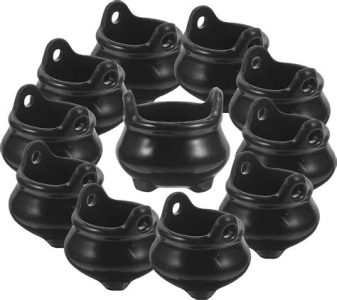Introduction
In today’s competitive retail landscape, product presentation plays a crucial role in attracting customers and driving sales. Plastic case displays serve as a versatile and effective solution for protecting and showcasing products, enhancing their visibility and appeal. This article explores the various advantages of plastic case displays, their applications across industries, and provides practical guidance on selecting and using them effectively.

Benefits of Plastic Case Displays
Plastic case displays offer numerous benefits that make them the preferred choice for retailers and manufacturers alike:
-
Enhanced Product Protection: Plastic case displays provide a secure and durable barrier against external factors, such as dust, moisture, and impact. They safeguard products from damage and spoilage, ensuring their quality and longevity.
-
Increased Visibility: Transparent or translucent plastic cases allow customers to clearly see the products inside, increasing product visibility and enhancing customer engagement. This enhanced visibility can significantly boost sales, as customers are more likely to purchase products they can see and examine.
-
Space Optimization: Plastic case displays are designed to maximize space utilization, allowing retailers to display a wide variety of products in a compact and organized manner. This space optimization can help increase sales by maximizing the use of available retail space.
-
Cost-Effectiveness: Compared to alternative display solutions, plastic case displays are relatively inexpensive, making them an accessible solution for businesses of all sizes. Their durability and reusability further contribute to their cost-effectiveness.
-
Versatility and Flexibility: Plastic case displays are highly versatile and can be customized to suit various product sizes, shapes, and industries. They can be easily adjusted or reconfigured to accommodate changing inventory or promotional needs.
Applications of Plastic Case Displays
Plastic case displays find application in a wide range of industries, including:
-
Retail: Retailers use plastic case displays to showcase products in a wide variety of retail environments, including grocery stores, convenience stores, and department stores.
-
Food and Beverage: Plastic case displays are widely used in the food and beverage industry to display perishable goods, such as fresh produce, meats, and dairy products.
-
Medical and Pharmaceutical: Plastic case displays are used in hospitals, pharmacies, and medical clinics to display medical equipment, pharmaceuticals, and other sensitive products.
-
Hardware and Industrial: Plastic case displays are used in hardware and industrial settings to display tools, spare parts, and other small items.
-
Electronics and Technology: Plastic case displays are used in electronics and technology stores to showcase smartphones, tablets, and other electronic devices.
Selecting the Right Plastic Case Display
Choosing the right plastic case display is essential to maximize its benefits. Consider the following factors when selecting a display:
-
Product Size and Shape: The size and shape of the products to be displayed should be considered when choosing a plastic case display. Ensure the display provides ample space for the products and allows them to be clearly visible.
-
Target Audience: Understand the preferences and behavior of the target audience. Consider the height and angle of the display to ensure products are positioned for optimal visibility and accessibility.
-
Durability and Construction: Choose plastic case displays made from durable and high-quality materials to withstand the rigours of retail environments. Consider the thickness and strength of the plastics used.
-
Customization Options: Opt for plastic case displays that offer customization options, such as adjustable shelves, branding, and lighting, to enhance product visibility and meet specific business requirements.
-
Cost and Budget: Consider the cost of the plastic case display and factor it into the overall budget for product presentation. Explore cost-effective options that meet the required functionality and aesthetics.
Step-by-Step Approach to Using Plastic Case Displays Effectively
Follow these steps to use plastic case displays effectively:
-
Plan the Layout: Determine the optimal layout for the plastic case displays based on the store’s floor plan, traffic flow, and visibility requirements.
-
Select the Right Products: Choose products that are suitable for display in plastic cases and that align with the target audience’s preferences.
-
Prepare the Products: Clean and prepare the products before placing them in the display to ensure they look their best. Use attractive packaging and labelling to enhance product appeal.
-
Position the Products: Place products strategically within the display, considering factors such as visibility, accessibility, and product grouping.
-
Maintain the Display: Regularly clean and maintain the plastic case display to keep it looking fresh and inviting. Replenish inventory as needed and adjust product placement to keep the display visually appealing.
Common Mistakes to Avoid
Avoid these common mistakes when using plastic case displays:
-
Overcrowding the Display: Avoid overcrowding the display, as it can make it difficult for customers to see the products clearly.
-
Poor Lighting: Ensure the plastic case display is well-lit to enhance product visibility. Avoid using dim or flickering lights.
-
Lack of Product Information: Provide clear and concise product information, including pricing and product descriptions, to aid customer decision-making.
-
Untidy Appearance: Keep the plastic case display clean and organized to maintain a professional and inviting appearance.
-
Inconsistent Branding: Ensure the plastic case display aligns with the store’s overall branding and aesthetic, including colours, fonts, and graphics.
Reimagining Plastic Case Displays for Enhanced Customer Experiences
As technology advances and customer expectations evolve, plastic case displays are constantly being reimagined to enhance the customer experience. Here are some innovative ways to use plastic case displays:
-
Interactive Displays: Integrate touchscreens or QR codes into plastic case displays to provide customers with additional product information, videos, or customer reviews.
-
Personalized Displays: Use data analytics and customer preferences to create personalized plastic case displays tailored to individual shoppers.
-
Gamified Displays: Introduce gamification elements into plastic case displays to engage customers and make the shopping experience more interactive.
-
Augmented Reality Displays: Utilize augmented reality technology to allow customers to virtually interact with products within plastic case displays, providing a more immersive shopping experience.
-
Sustainability: Explore sustainable materials and innovative designs for plastic case displays to minimize environmental impact and appeal to eco-conscious consumers.
Conclusion
Plastic case displays play a vital role in protecting and showcasing products, enhancing customer engagement, and generating sales. By understanding their benefits, applications, and selecting and using them effectively, businesses can maximize the impact of their product displays and drive business growth. As technology evolves, plastic case displays are continuously being reimagined to meet the evolving needs of customers and create innovative and engaging shopping experiences.




























